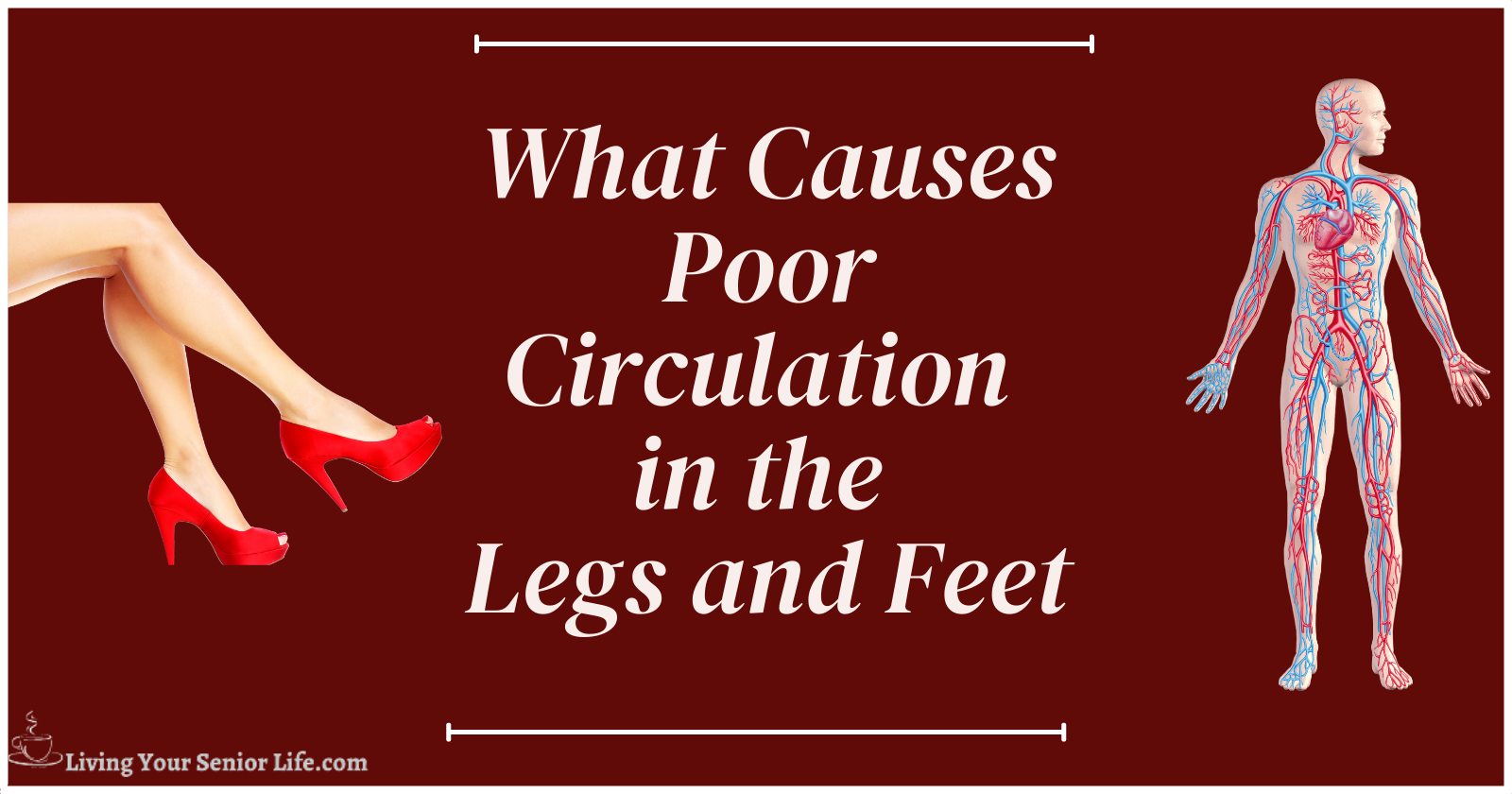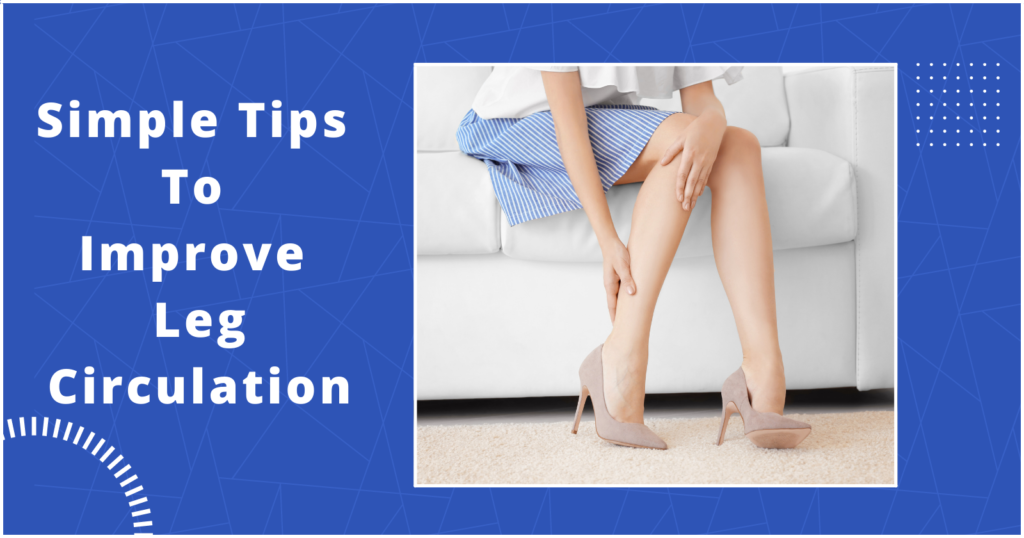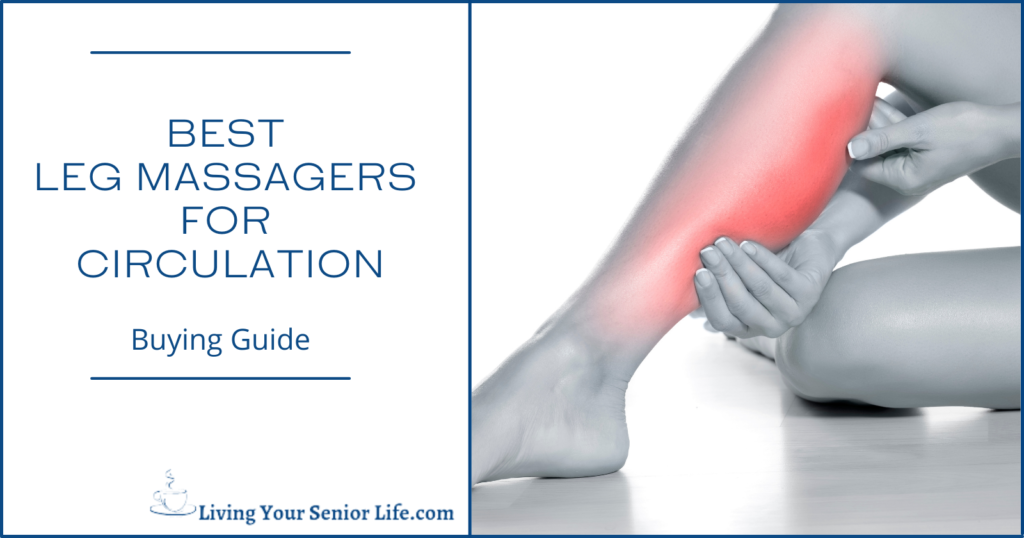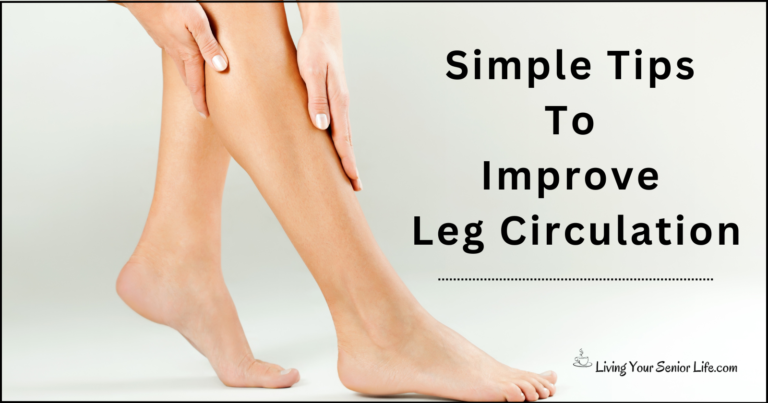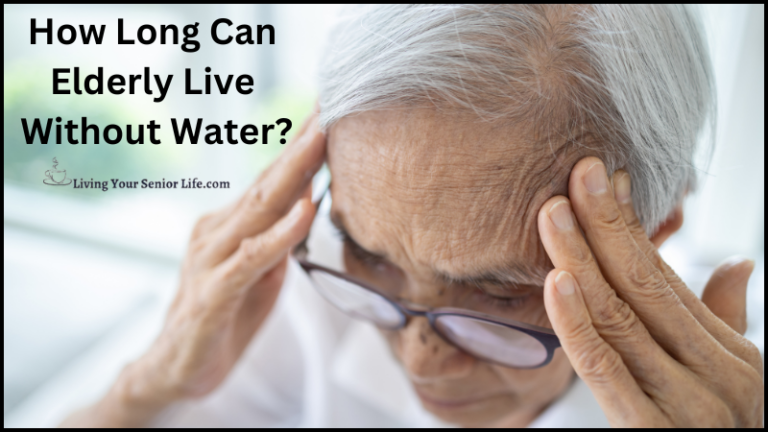This article will explore the causes of poor circulation in the legs and feet, and how to identify if you have it. It will also explain why it is important to address poor circulation and how to combat circulatory problems through simple lifestyle changes at home or work.
It is important to note that this post is for informational purposes only and is not intended to be used in diagnosing any medical condition. It is crucial to consult with a healthcare provider to rule out any underlying diseases and to create a plan that addresses poor circulation.
What Causes Poor Circulation in the Legs and Feet?
Poor circulation in the legs and feet can be caused by a variety of factors, including peripheral artery disease (PAD), diabetes, obesity, smoking, high blood pressure, and high cholesterol. Other factors that can contribute to poor circulation include sitting or standing for long periods of time, wearing tight clothing or shoes, and certain medical conditions such as Raynaud’s disease. Symptoms of poor circulation in the legs and feet may include cramping, numbness, tingling, and swelling. Treatment options may include lifestyle changes, medication, and in some cases, surgery.
What Are The Symptoms Of Poor Circulation?
Poor circulation can cause a variety of symptoms, including numbness, tingling, and pain in the limbs, especially in the feet and hands. Other common symptoms include muscle cramps, cold toes or fingers, and skin that is pale or blue-tinged.
In severe cases, ulcers or sores may develop on the extremities, and the pulse may be weak. Swelling and discoloration of the affected area may also occur. Coldness and throbbing sensations in the calf and leg pain during exercise, known as claudication, are also common symptoms of poor circulation.
Why Poor Circulation is Bad for Your Health
Poor circulation can lead to serious health complications, including fatal conditions like deep vein thrombosis or pulmonary embolism. Thickened arteries caused by poor circulation can also lead to high blood pressure, high cholesterol, and obesity.
Additionally, circulation problems in the legs and feet can cause diabetes. Poor circulation can also increase the risk of heart attack, stroke, and amputation. Erectile dysfunction may also be a complication of poor circulation. It is important to maintain healthy circulation to avoid these health problems.
What Causes Poor Circulation in the Legs and Feet?
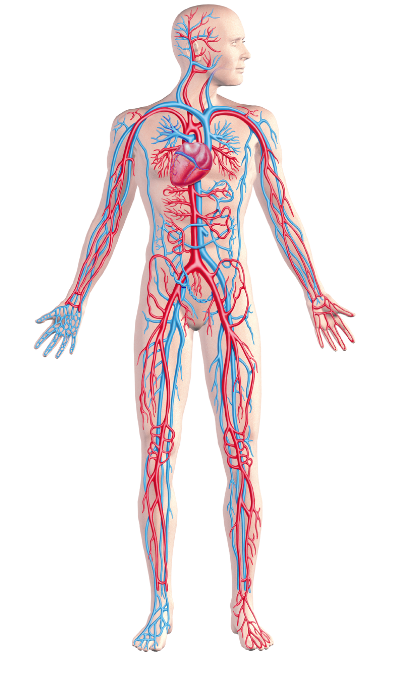
Peripheral Artery Disease
Peripheral Artery Disease (PAD) is a common circulatory condition that occurs when the arteries in the legs become narrow due to the accumulation of plaque in the artery walls, a condition known as atherosclerosis. The plaque buildup restricts blood flow to the legs, limiting the oxygen and nutrient supply to the tissues. This can result in pain, numbness, or weakness in the legs and feet.
Blood clots may develop on the artery walls, narrowing the inner diameter of the blood vessels and obstructing major arteries.
Risk factors for PAD include smoking, diabetes, obesity, high cholesterol and triglyceride levels, high blood pressure, and physical inactivity.
To prevent PAD, one should exercise regularly, control their cholesterol and high blood pressure, manage their blood sugar, eat a healthy diet, and not smoke.
Video: What Causes Poor Circulation In The Legs and Feet
Raynaud’s Disease
In response to cold, stress and certain medications, Raynaud’s disease causes the blood vessels and arteries that supply blood to the skin to narrow. This can result in pain, numbness, or tingling in the affected areas.
Until blood flow improves, usually when you get warm, the affected body parts, generally fingers and toes, may turn white or blue and feel cold and numb.
Standing Too Long
Standing for long periods can cause poor circulation in the legs and feet. This is because the muscles in the legs and feet are not contracting and relaxing, which helps to pump blood back up to the heart. This can cause blood to pool in the legs and feet, leading to swelling, pain, and discomfort.
Toes
Poor circulation may also be caused by not moving your toes enough! It’s important to make sure that you spend a few minutes every day wiggling your toes and moving your ankles in circles to help blood flow.
Varicose Veins
When your veins swell, expand, and become overfilled with blood, varicose veins occur. Varicose veins are blue-purple or red in color and often appear swollen and elevated and, many times, painful.
Varicose veins aren’t as efficient at moving blood; thus, circulation may become an issue.
Wearing compression socks or compression stockings places pressure on your legs and decreases swelling, allowing blood to flow more easily. Talk to your doctor to see if he believes these are something that may help your circulation.
Other Health Problems
Other health problems such as high cholesterol, elevated blood pressure, obesity, and diabetes can also hinder circulation in both legs and feet. The best way to avoid these issues is through a healthy diet supplemented with exercise at least three times per week.
You should also be aware of any family history regarding these and other health problems and speak to a doctor immediately.
Why Is Poor Circulation Bad For Your Health
Poor circulation can be very bad for your health. If you have inadequate circulation in the legs and feet, it can lead to the formation of deep vein thrombosis or pulmonary embolism, which can be fatal if not treated.
Poor circulation can also cause several other health problems. If you have thickened arteries, it can lead to high blood pressure, high cholesterol, or obesity.
Diabetes is another possible health problem caused by circulation problems in the legs and feet.
Ways to Combat Circulatory Problems
Through Easy Lifestyle Changes at Home or on the Job
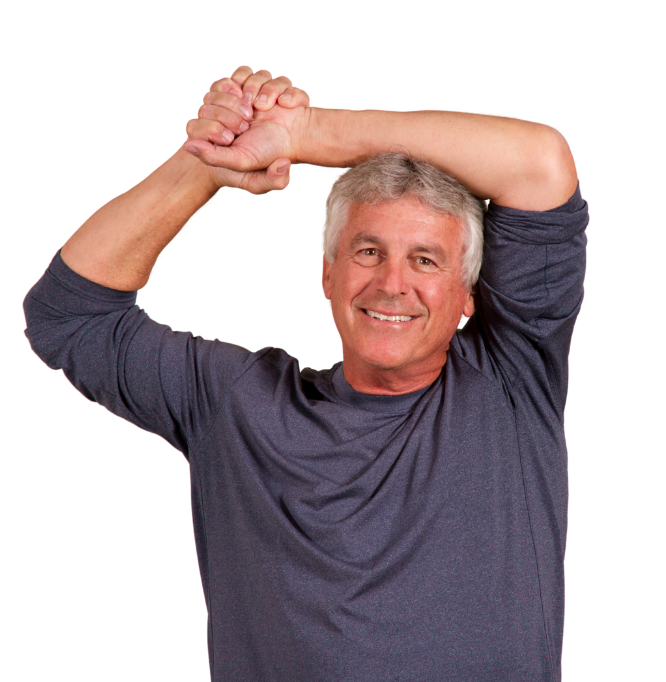
If you are experiencing circulatory problems, there are simple lifestyle changes you can make at home or work to improve blood flow in the legs and feet.
Commuting
If you’re a commuter, consider leaving a little bit earlier to allow additional time for walking. This is a great way to increase your physical activity and improve blood flow.
You can also easily combat the lack of circulation in the feet and legs by taking the stairs instead of the elevator at least once per day.
Move
It is important to move regularly, even if it’s just for a few minutes. You can easily increase your physical activity by getting up and walking around your office during breaks and lunch. If you are standing for long periods, be sure to stretch frequently by reaching for something above your head to maintain circulation in your legs and feet.
Read Next: Best Walking Shoes For Men
Sitting
If you’re sitting, wiggle your toes in circles or move your ankles in circles periodically. While sitting, make sure that your feet are flat on the floor and elevated by a few inches, which will help keep blood moving and prevent clots from forming.
You might want to invest in a foot frame that will help keep your legs and feet elevated while you work.
Clothing
Those who suffer from poor circulation in the legs and feet should avoid wearing restrictive clothing with thick fabrics that may constrict or compress your feet. Generally speaking, it’s best to wear closed-toe shoes made out of materials like canvas or rubber. Shoes having an adjustable strap around the ankle can be helpful.
Leg/Foot Massager
Another option to help in combating poor foot and leg circulation is by using a leg or foot massager.
Medications
If lifestyle changes are not enough, speak with your doctor about medication or other treatments to improve blood flow. Medications such as diuretics, ACE inhibitors, or anti-ischemic medications may be prescribed to treat poor circulation.
It is important to speak with a doctor immediately if you are experiencing circulation problems, so they can diagnose and prescribe the best treatment for your needs.
FAQs
Is poor circulation in the legs serious?
Poor circulation in the legs can be serious if left untreated. It can lead to pain, numbness, and weakness in the legs. In severe cases, it can cause tissue damage and even amputation. Therefore, it is important to seek medical attention if you suspect poor circulation in your legs.
How can I check blood circulation in my legs?
There are several ways to check blood circulation in the legs, including:
Ankle-brachial index (ABI) test: This test compares the blood pressure in your ankle to the blood pressure in your arm to determine if there is a blockage in the arteries in your legs.
Doppler ultrasound: This test uses sound waves to create images of the blood flow in your legs.
Angiography: This test involves injecting a dye into your arteries and taking X-rays to see if there is a blockage.
What deficiencies can cause poor circulation in the legs?
Deficiencies in certain vitamins and minerals can contribute to poor circulation in legs. These include:
Iron deficiency: Iron is essential for the production of hemoglobin, which carries oxygen in the blood. Without enough iron, the blood cannot carry enough oxygen to the muscles, leading to poor circulation.
Vitamin B12 deficiency: Vitamin B12 is necessary for the production of red blood cells, which carry oxygen in the blood. Without enough vitamin B12, the body cannot produce enough red blood cells, leading to poor circulation.
Vitamin D deficiency: Vitamin D is necessary for the health of the blood vessels. Without enough vitamin D, the blood vessels can become stiff and narrow, leading to poor circulation.
Additional Reading
Conclusion
Poor circulation in the legs and feet can be a serious issue caused by various factors such as prolonged sitting or standing or thickened arteries. However, there are many ways to combat this problem. Simple lifestyle changes such as exercising regularly, quitting smoking, and maintaining a healthy diet can help improve blood flow. Medications prescribed by a doctor can also be effective in treating poor circulation.
It’s important to consult a doctor if you experience symptoms such as numbness, tingling, or pain in your legs or feet. By taking the necessary steps to improve blood flow, you can prevent further complications and improve your overall health and well-being.
Do you suffer from poor circulation in the legs or feet? What causes this problem for you? How do you combat these serious issues on a day-to-day basis? Share your thoughts, questions, and knowledge in the comments section below!
